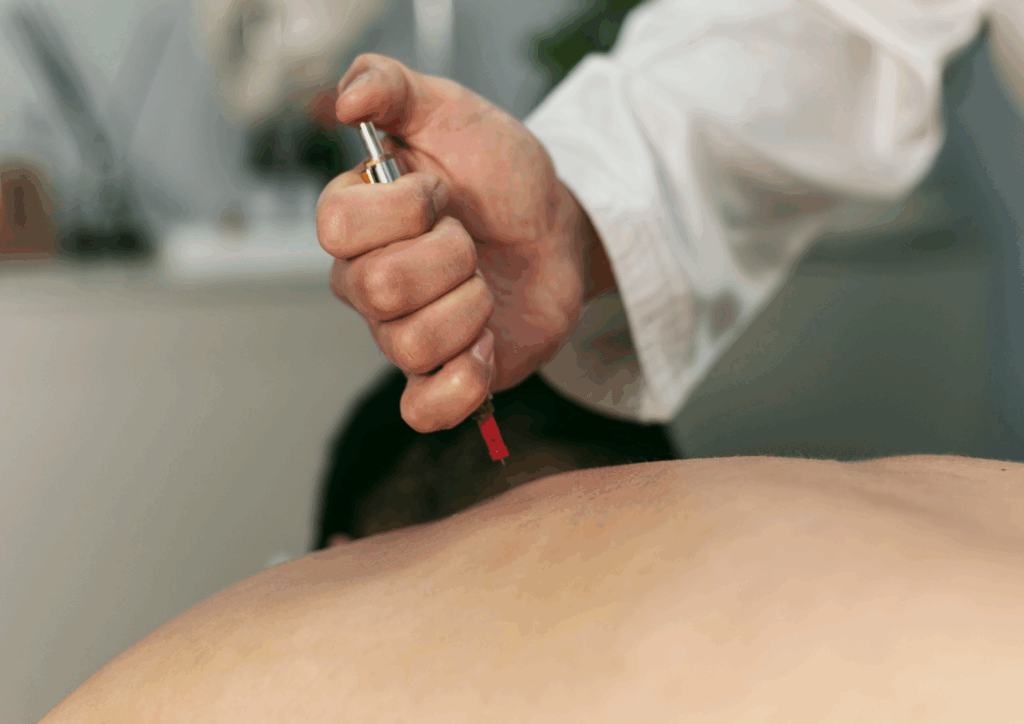Introduction
Dry needling is one of the most effective tools we use at Central Ohio Spine & Joint in Westerville, Ohio to help patients release muscle tension, reduce pain, and restore movement. But did you know there are different techniques within dry needling?
In this article, we’ll explain the main types of dry needling — from static to electro — and how we match the right approach to each patient’s condition.
1. Static Dry Needling
- What it is: The needle is inserted into a trigger point or painful area and held in place for a set amount of time.
- Best for: Patients who are new to dry needling or dealing with very sensitive tissues.
- Benefit: Gentle, controlled, and effective for reducing local pain.
2. Pistoning (Dynamic) Dry Needling
- What it is: The needle is inserted and gently moved in and out of the tissue to elicit a “twitch response.”
- Best for: Chronic knots and stubborn trigger points.
- Benefit: Helps reset muscle tension quickly and can provide immediate relief of stiffness.
3. Electro Dry Needling
- What it is: Electrodes are attached to the needles, delivering a mild current to stimulate the muscle.
- Best for: Chronic pain, nerve irritation, or areas that need extra stimulation.
- Benefit: Enhances blood flow, promotes healing, and provides a longer-lasting effect than static needling alone.

4. Trigger Point-Focused Dry Needling
- What it is: A targeted approach to directly release hyper-irritable spots in muscles that refer pain elsewhere.
- Best for: Headaches, neck pain, shoulder tension, and low back pain.
- Benefit: Resolves both local and referred pain patterns.
5. Segmental Spine-Focused Dry Needling
- What it is: Needling applied at spinal levels related to the area of pain (segmental facilitation).
- Best for: Patients with nerve-related pain, sciatica, or widespread muscle tension linked to spinal dysfunction.
- Benefit: Calms irritated nerves, reduces widespread muscle guarding, and restores segmental motion.
How We Decide Which Type to Use
At COSJ, we don’t take a one-size-fits-all approach. Instead, we:
- Evaluate your condition and goals.
- Identify the source of your pain.
- Select the dry needling technique (or combination) that best fits your needs.
We often combine dry needling with chiropractic care, corrective exercise, and shockwave therapy as part of our Repair → Retrain → Reinforce model.
FAQs About Dry Needling in Westerville
Which type of dry needling is most effective?
It depends on your condition. Some respond best to static needling, others to electro or segmental approaches.
Does electro dry needling hurt?
Most patients feel a light tapping or pulsing sensation — it’s very tolerable.
How do I know if dry needling is right for me?
Our providers perform a full evaluation to determine the best treatment approach.
Ready to experience the benefits of dry needling for yourself? Our team will select the right technique for your condition and goals.
📍 Central Ohio Spine & Joint
768 Park Meadow Rd.
Westerville, Ohio 43081
📞 (614) 392-2730
👉 Schedule your $49 diagnostic scan today and find out which type of dry needling is right for you.

Recent Comments